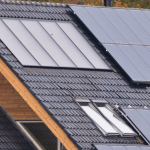Act now before energy bills rise
Householders need to act now after a warning this week that energy bills will rise to £1,500 a year by 2015.
Already the cost of heating a home has doubled in the last eight years and if the present trend continued this will increase to £1,582 within three years and to £2,766 in six years, says the energy comparison business uSwitch.com
This does not include any extra costs added to bills by power companies investing in technology to make their fuels greener, such as the £160 a year increase in electricity bills predicted by 2030 in the recent draft Energy Bill.
This increase announced in the recent Queen’s Speech is to pay for investment in renewable energy to build nuclear power plants and offshore wind turbines.
The Department of Energy and Climate Change said if nothing was done average bills would increase by £200 by 2030 because of the rising cost of imported wholesale gas.
But Ann Robinson, from uSwitch.com, said: “Once the average bill hits £1,500 a year consumers will be forced to compromise on their comfort, health and well-being.”
At the moment bills are just £248 or 17 per cent short of the £1,500 level.
But she said in the future many families would have to cut down on their energy use as they would not be able to pay their bills.
This would also push up the cost of owning or renting a home and may force more and more adults to live at home with their parents.
But Midlands energy expert Ron Fox, of Noreus Ltd in Stafford, said there are three ways householders could reduce their energy bills if they acted now.
Firstly, they could spray foam their loft with a system such as the Icynene Insulation System which forms an air-tight seal in the attic and reduces heating bills by up to 50 per cent as it literally stops heat going up through the roof, saving up to £600 a year every year.
Although it costs up to £2,900 to have the average 60 square metres of attic space spray foamed the good news is that the Government charges VAT at only 5 per cent compared to the normal 20 per cent.
Secondly, he suggests putting a four-metre square solar thermal system on the roof which gives people much cheaper hot water as it is powered and paid for by sunlight – and doesn’t use fossil fuels.
He said it cuts energy costs by up to 25 per cent and during the summer it should provide all hot water needs for a home and about half during the rest of the year. Residents will need to heat the water further with a boiler or immersion heater during the winter months.
The good news is that until August 1 the Government is giving a £300 Renewable Heat Premium Payment (RHPP) towards the £5,500-£6,000 cost of installing a solar thermal unit. For more details go to www.energysavingtrust.org.uk
Finally, householders could install solar panels on their home and cut their energy bills as well as receiving a subsidy through the Feed-in Tariff – the money the Government pays residents for generating electricity.
The Generation Tariff is at 21p per Kilowatt Hour for all electricity generated and is topped up with the Export Tariff, which adds an extra 3.1p per KWh for electricity exported to the Grid.
This sum is tax free, index-linked to retail prices inflation and guaranteed for 25 years – but only for the next two months.
From August 1 the Department of Energy and Climate Change (DECC) said that the Feed-in Tariffs scheme would be reduced by almost a quarter from 21p to 16p per kilowatt hour (Kwh) with the lifespan of payments reduced from 25 years to 20 years.
Although it costs around £7,000 to install solar panels Ron said: “The returns from investing in this technology can be better than putting your money in a bank account or a pension.”
For more details about these three energy-saving systems call Ron on 01782 756995 or request a call back.




